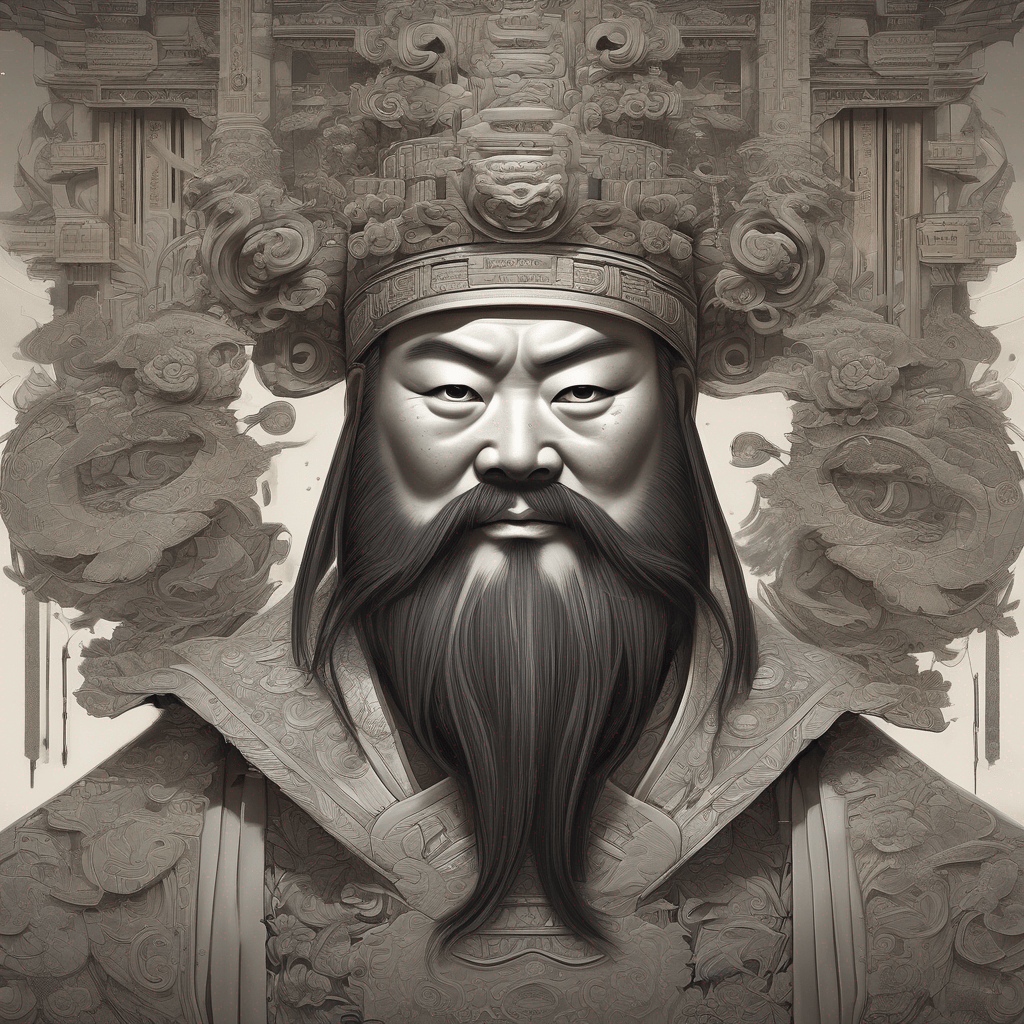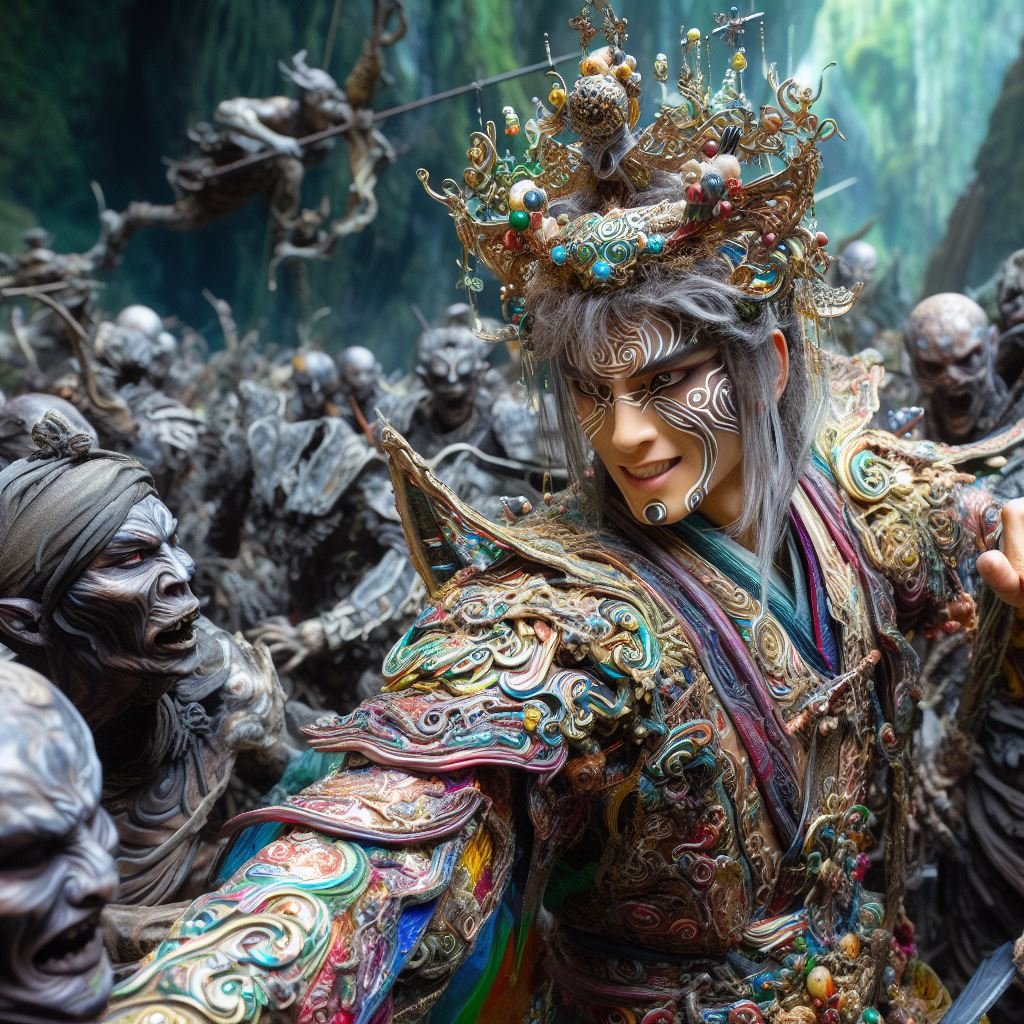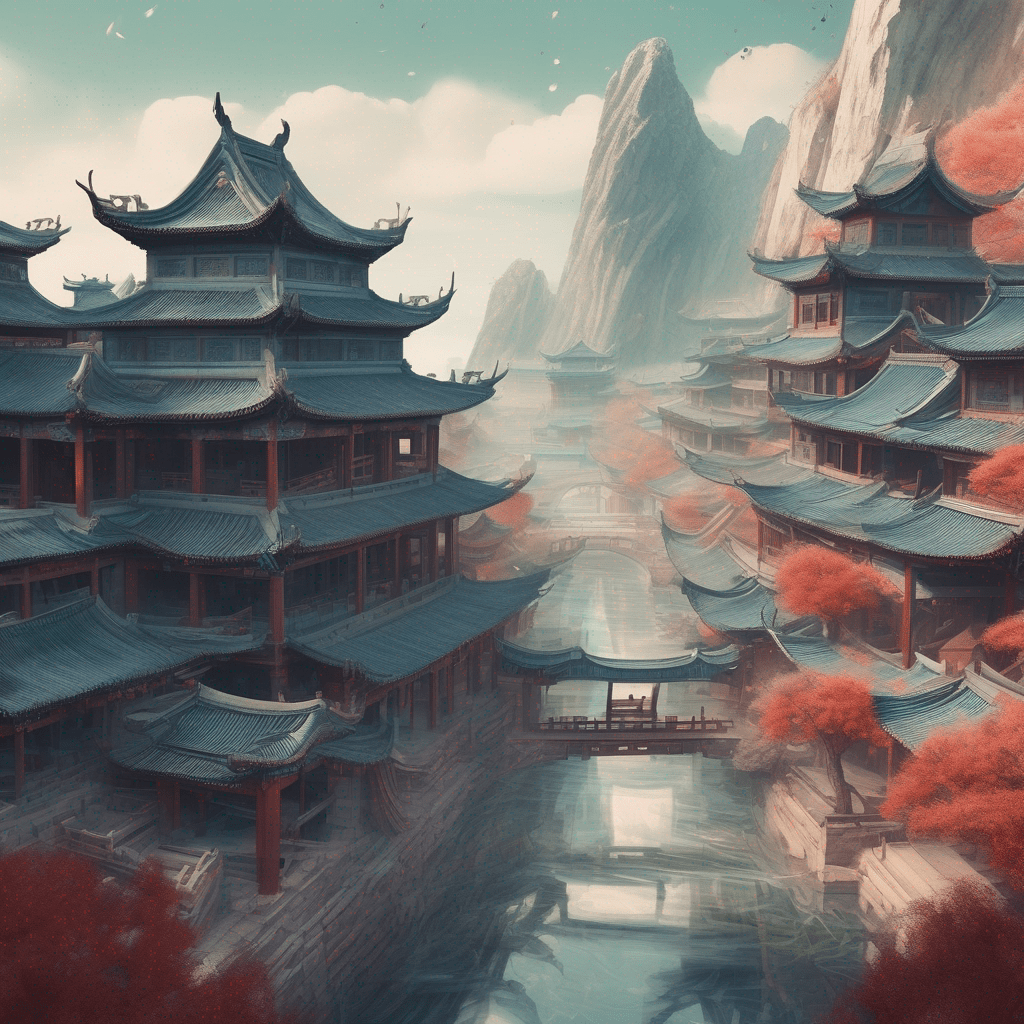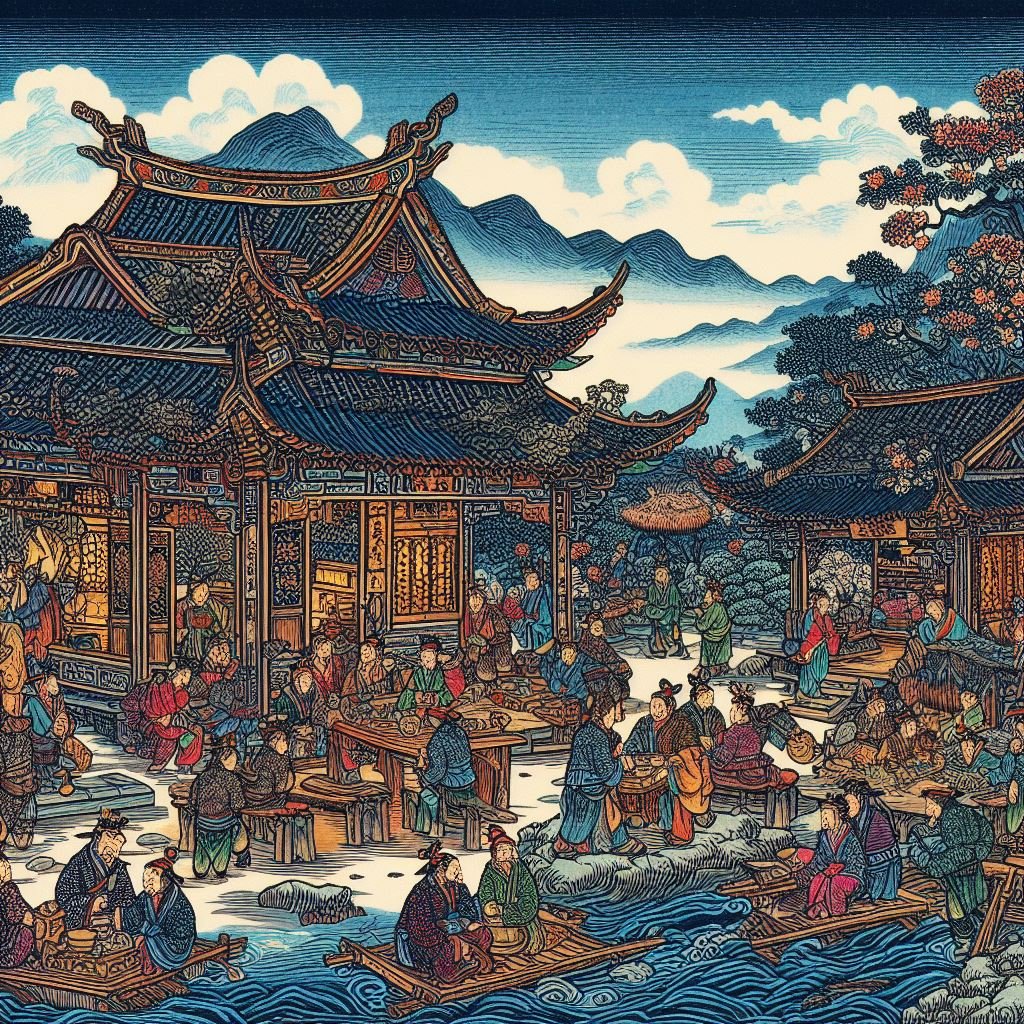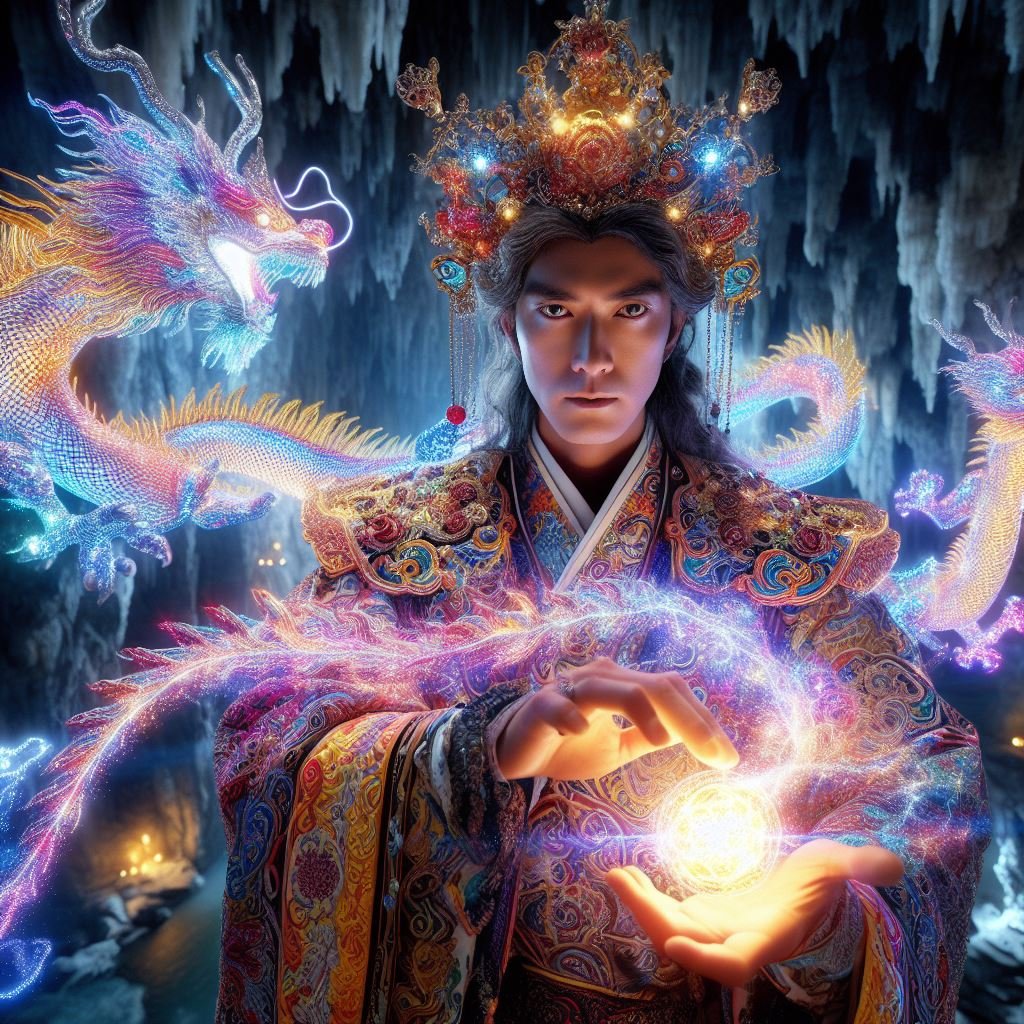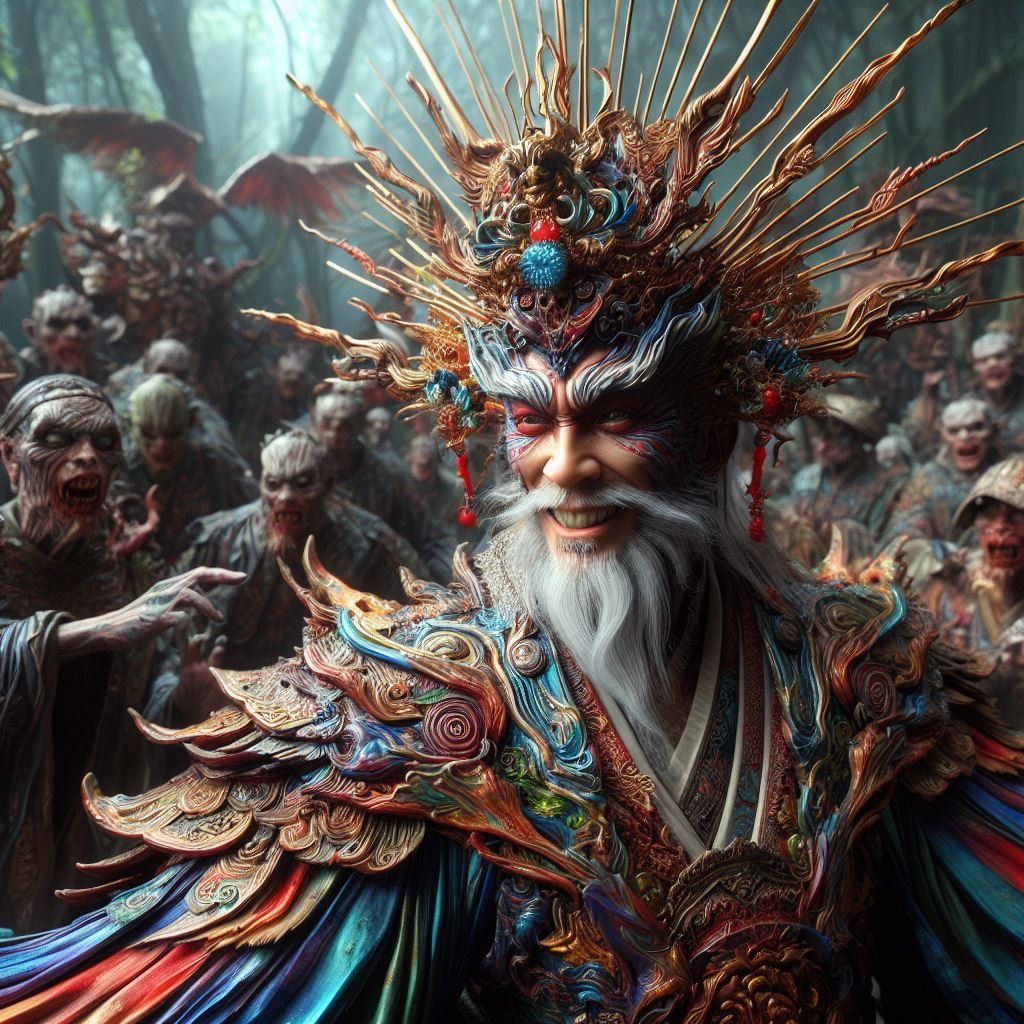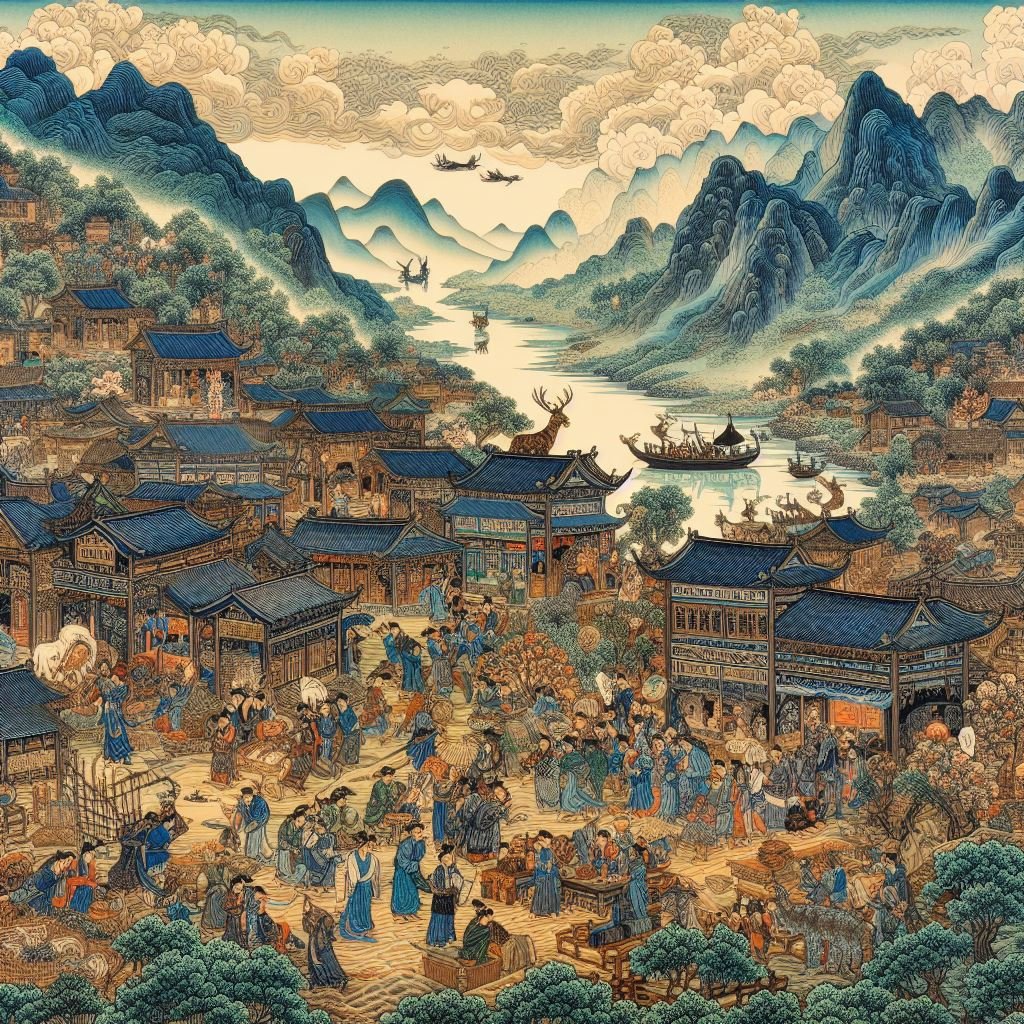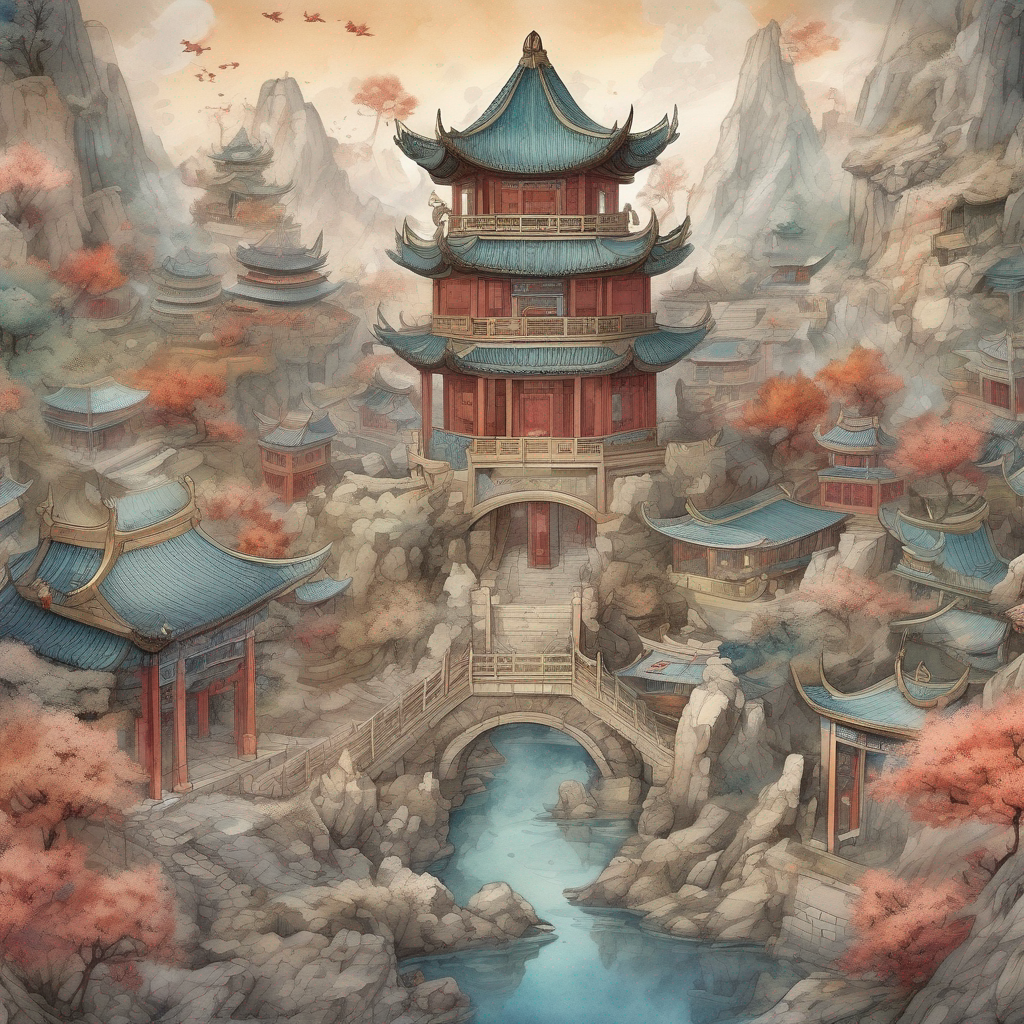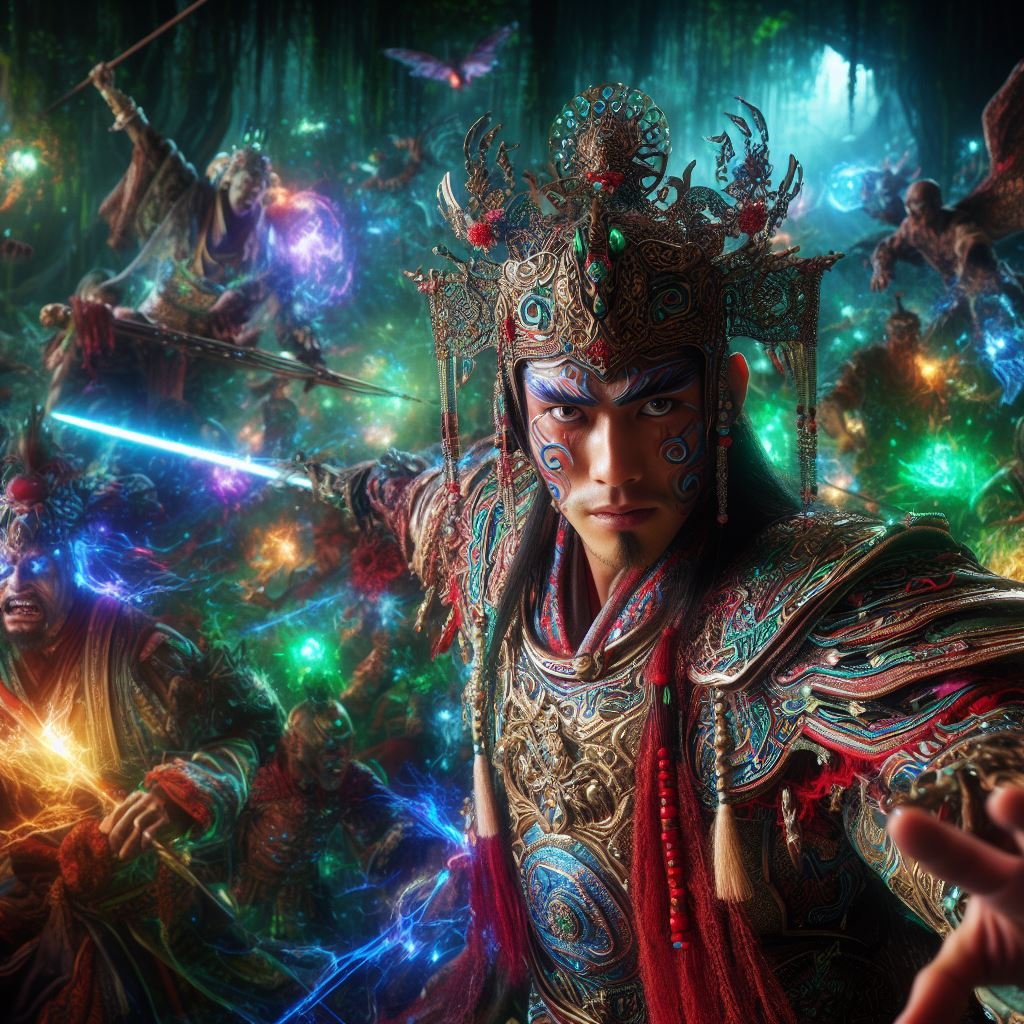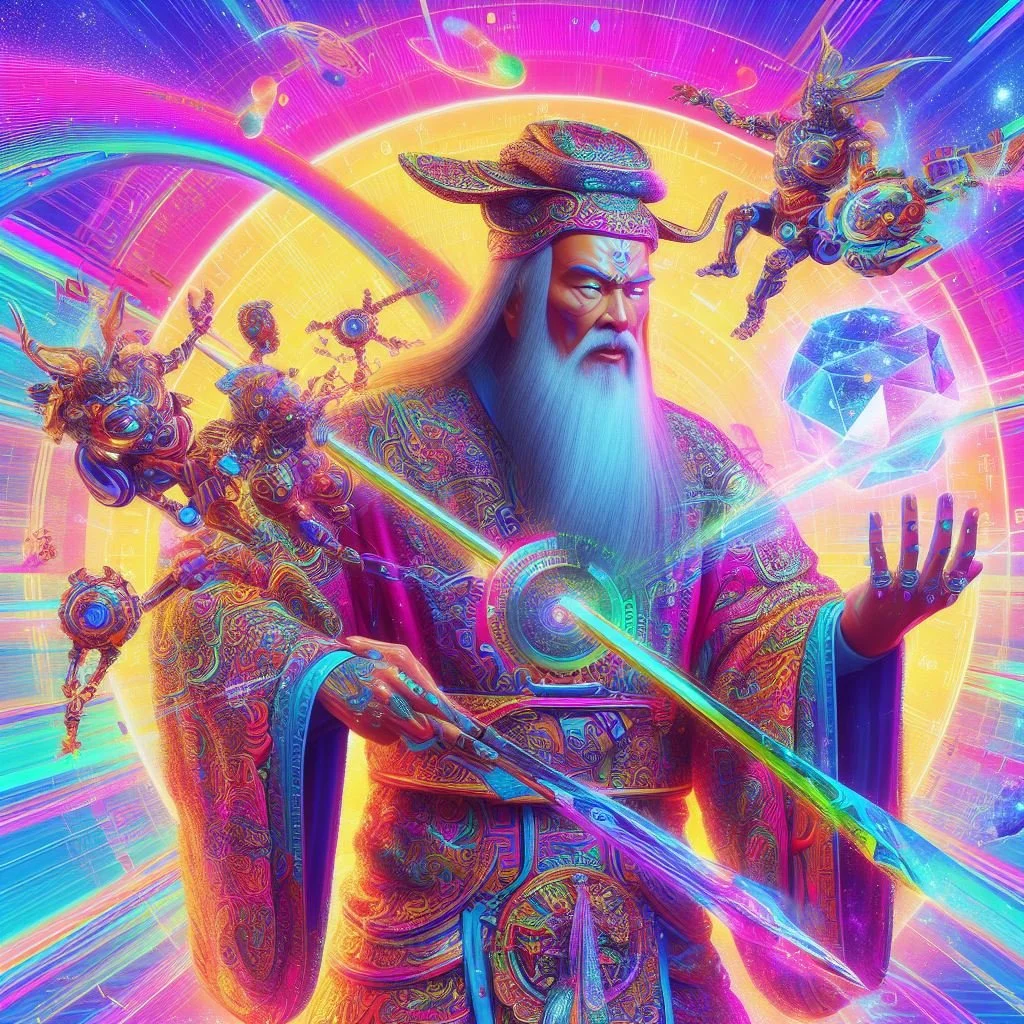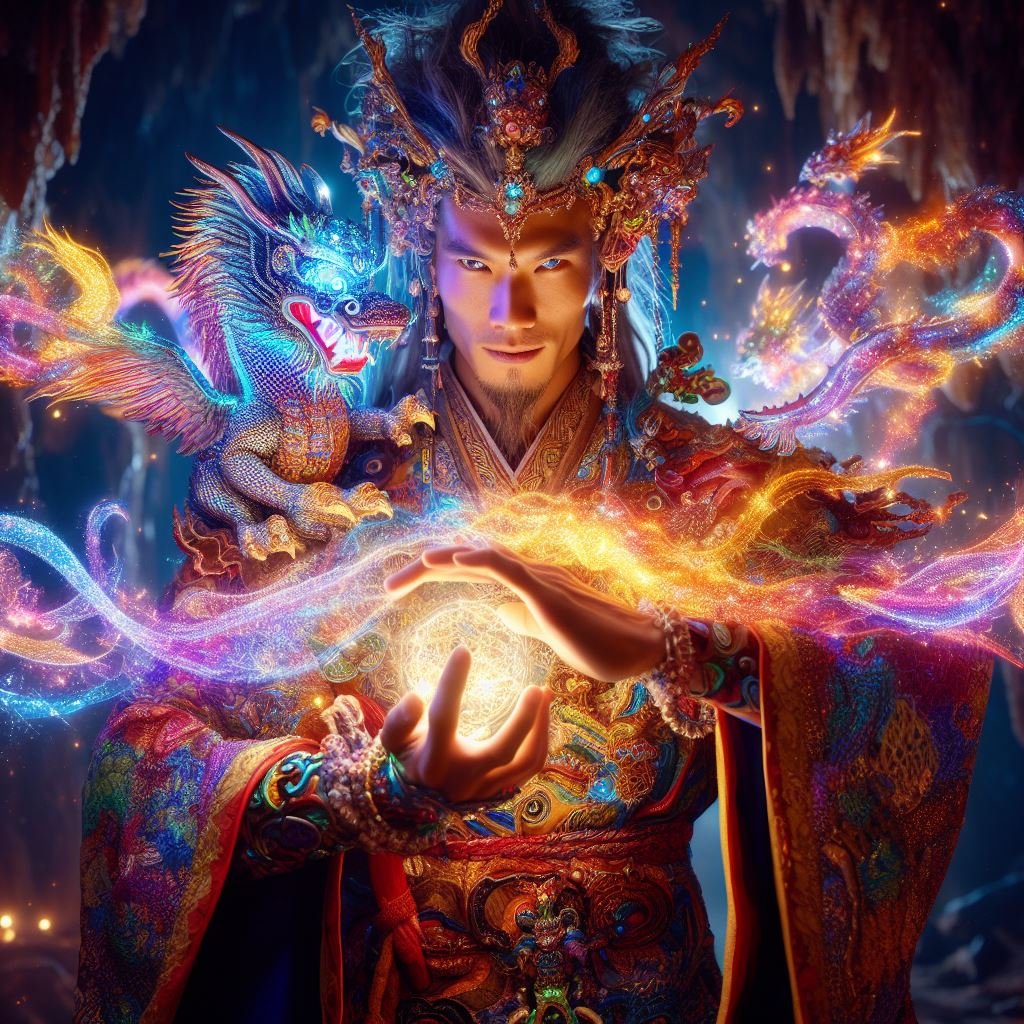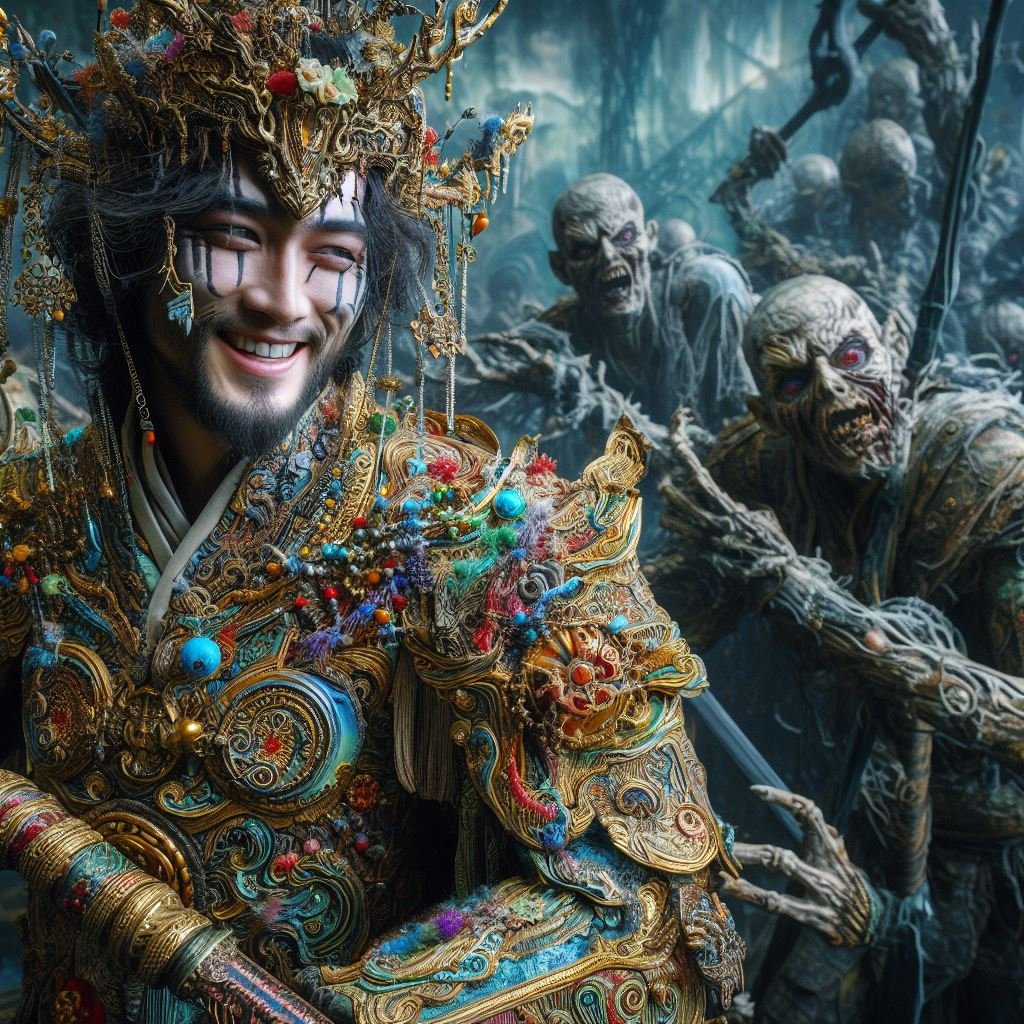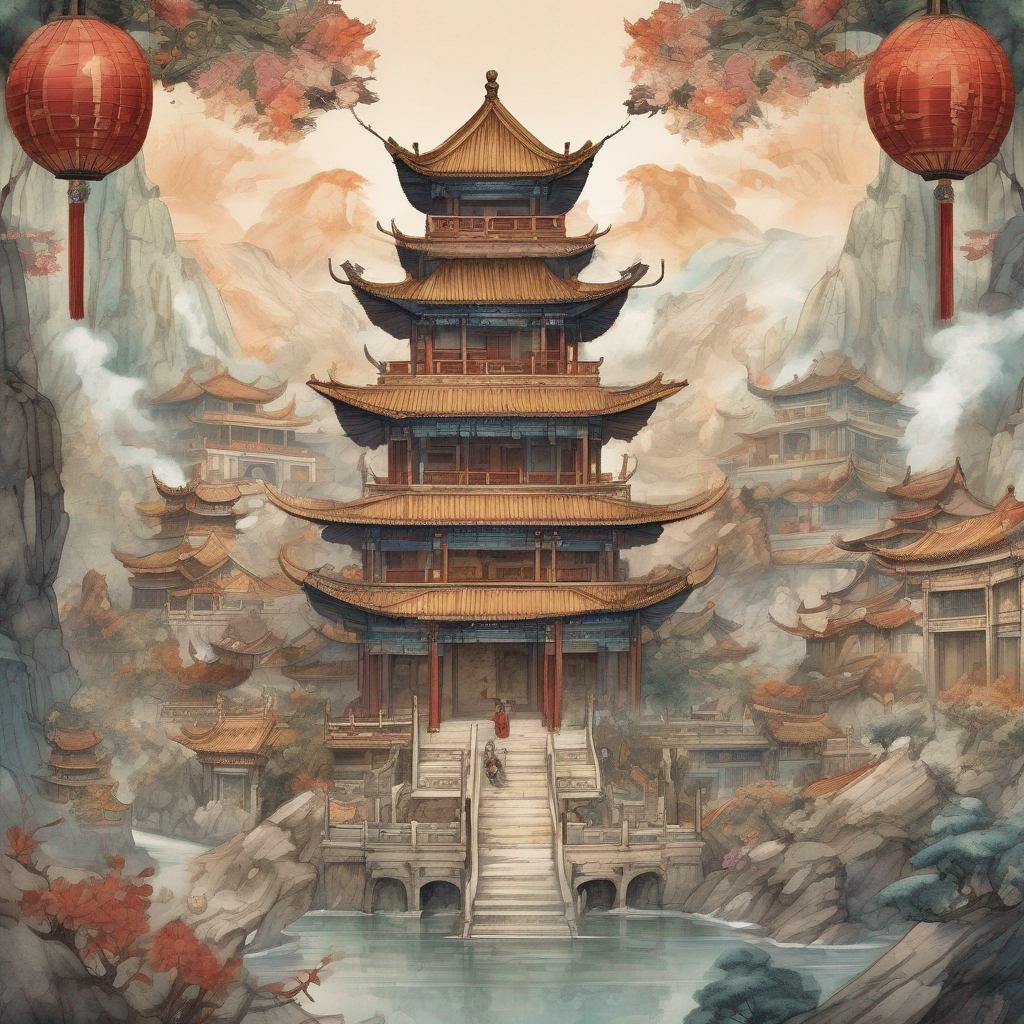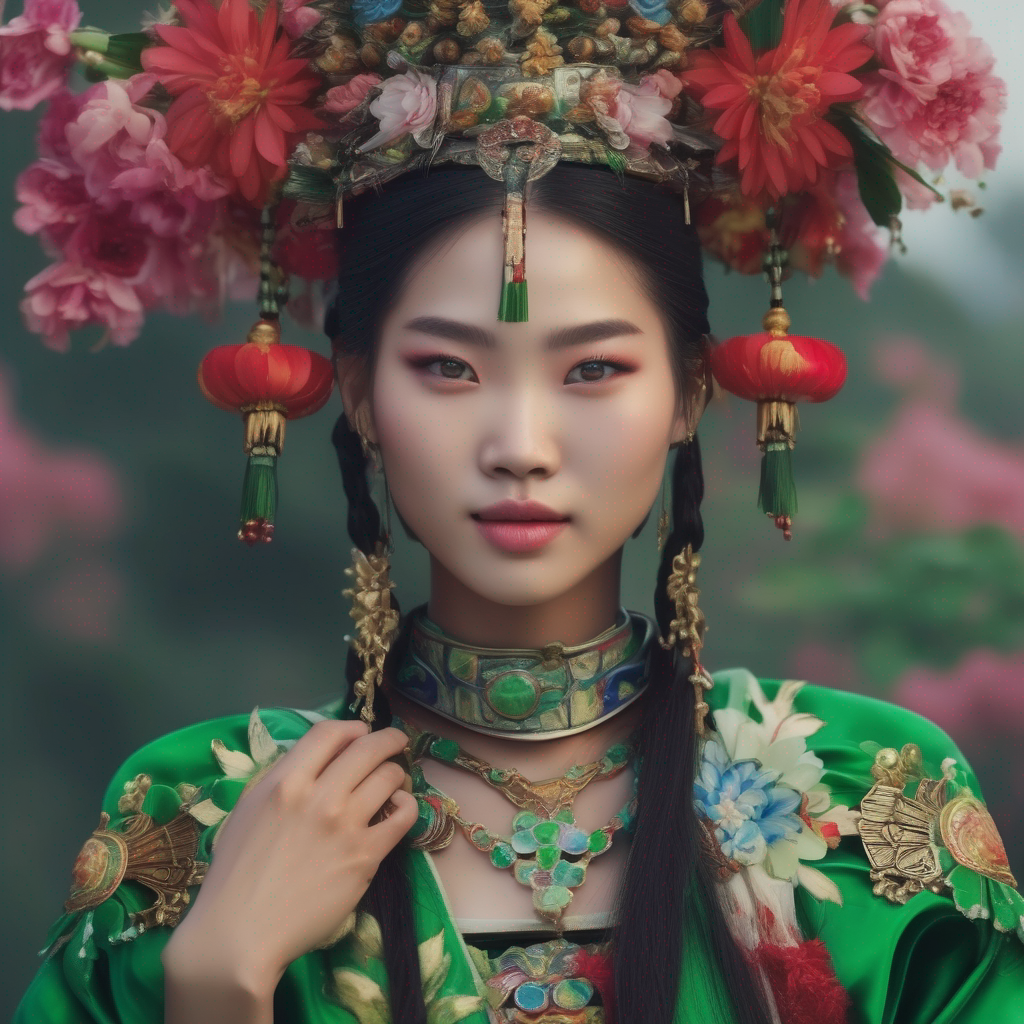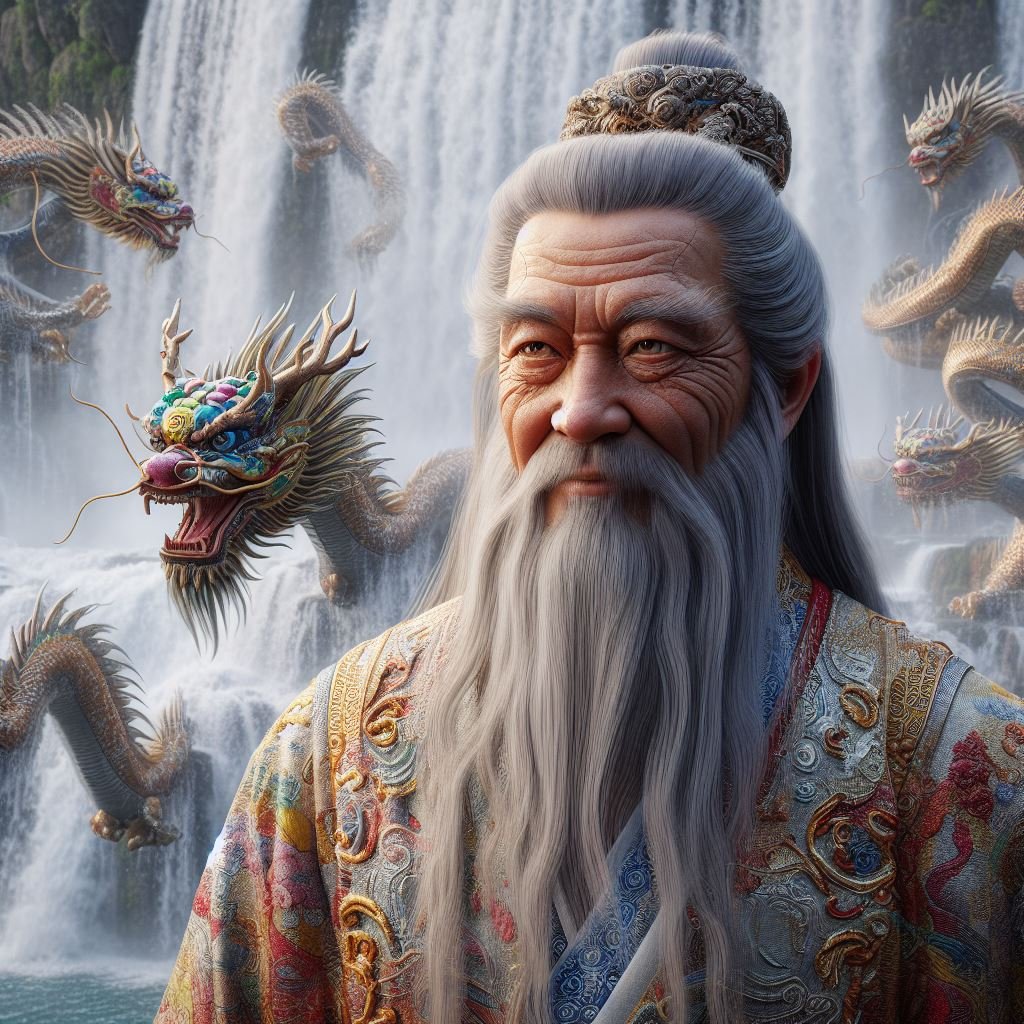The Life and Wisdom of Confucius
China's Great Sage who Guided Humanity Toward Goodness
Key Takeaways:
Cultivating compassion, humility and integrity through moral self-improvement is central to Confucian philosophy.
Finding meaning lies in harmonizing one's actions with cosmic patterns and fulfilling duties to the community.
Ritual propriety and adhering to hierarchical roles promotes social ethics and order.
Tradition and innovation must balance; progress should build upon cultural bedrock.
Confucian thought remains highly relevant in addressing modern problems from a humanistic perspective.
Abstract
Confucius was an immensely influential Chinese philosopher who pioneered a humanistic ethical framework that shaped East Asian civilization for millennia. This biography illuminates Confucius’ life from humble origins to respected sage, weaving rich narratives that transport readers into his era to vividly experience seminal events.
Analysis delves into Confucius’ teachings that spread through China and beyond, becoming foundational to Eastern philosophy while also containing universal insights into human flourishing. Chronicling Confucius’ journey provides enduring lessons on living a virtuous, compassionate life that remains powerfully pertinent today.
Introduction
As one of history’s most impactful thinkers, Confucius developed a moral philosophy that would profoundly influence East Asia and ripple worldwide. His values-based principles addressed how individuals can cultivate moral excellence and leaders govern humanely. Confucius’ wisdom was rooted in China's cultural context but contained universal significance in guiding humanity toward goodness.
This biography illuminates Confucius' life and teachings by immersing readers in his era to elucidate ideas that still reverberate globally today. Joining his journey provides timeless lessons in appreciating our shared humanity and potential. While formulated millennia ago, Confucius' humanistic path remains brightly relevant in our age, continuing to inspire moral self-cultivation.
Early Life in Chaotic Times
The man history would come to revere as China’s preeminent sage was born in 551 BCE as Kong Qiu in the Lu state amid the Zhou dynasty. This was a turbulent period of political upheaval among contending feudal lords vying for dominance. As historian Jennifer Jay writes, “When Confucius was born, the Zhou government was virtually powerless, able to maintain only the vestiges of centralized authority.” (Jay, 1967, p.43).
Confucius’ father Kong He served as an officer in Lu’s minor aristocracy but died unexpectedly when Confucius was just three years old. The family was left impoverished and Confucius was raised by his mother Yan Zhengzai in humble conditions.
From childhood, Confucius distinguished himself as thoughtful and fond of learning. He is said to have enjoyed studying poetry, music, archery, calligraphy, arithmetic, ritual practices and seemed drawn to philosophical contemplation even as a boy.
To support his family, the adolescent Confucius took up menial jobs such as keeping livestock and working in a granary before becoming a bookkeeper. In his early 20s he served as a tutor educating aristocratic youth in poetry, history and matters of propriety. Confucius “loved ancient culture so much that everything he said seemed to spring from it,” observed one of his tutoring students (Eno, 1996, p.12).
Confucius was born in the state of Lu, located in the fertile plains along the banks of the Yellow River in eastern China. Lu was one of many warring states vying for power during the Spring and Autumn period of the Zhou dynasty (770-476 BCE) (Ebrey, 2010).
The Zhou dynasty was originally centered around their capital near present-day Xi'an. By Confucius' time, the Zhou kings had lost control over their vassal states, although they still held symbolic cultural authority (Jay, 1967).
Lu was ruled by a duke and aristocratic families including Confucius' own Kong clan. These rival clans were frequently embroiled in power struggles and battles for land (Ebrey, 2010).
Confucius' father Kong He was part of the shi social class - minor aristocrats who served as warriors, bureaucrats and advisors to feudal lords. His sudden death in a time of political instability left the family poor (Jay, 1967).
Yan Zhengzai, Confucius' mother, is thought to have been from a family of the shi class as well. After being widowed, she worked hard to provide for the family, teaching Confucius values of perseverance and self-discipline (Ebrey, 2010).
The World of Confucius
Landscape of Lu
Lu was situated on the expansive North China Plain, where the Yellow and Yangzi rivers deposited extremely fertile silt ideal for growing millet, wheat, and rice (Bielenstein, 1986).
The mild coastal climate brought ample rain, supporting oak and pine forests where people hunted deer, boars, and pheasants (Anderson, 1988). Lu's countryside was dotted with farming villages connected by dirt roads and canals. Walled towns housed artisans and merchants who plied their trades in open-air markets (Lewis, 2007).
Cuisine of Lu
Agriculture flourished in Lu, providing staple crops like millet, rice, beans, cabbage, yams and squash (Anderson, 1988). Farmed fish like carp joined wild-caught fish and shellfish from the coast in providing protein. Pigs and chickens were domesticated early on. Wild geese, ducks, and pheasants were hunted in the forests. Fermented condiments like soy sauce had already been invented, along with tofu (Anderson, 1988).
Wheat and rice were used to make noodles, dumplings, and steamed buns. Millet was boiled into porridges or fermented into a crude beer. Cooking involved pan-frying, simmering in earthenware pots, roasting, and baking (Newman, 1995). Confucius' native region thus provided a diverse, nutritious diet thanks to the advanced agriculture and animal husbandry of its people.
Customs and Rituals
In Confucius’ time, Lu retained many of the Zhou dynasty’s elaborate rituals that structured daily life (Eno, 2015). Courtly ceremonies like ancestral offerings, weddings, and coming-of-age rites followed precise protocols. Elders were honored; filial piety was paramount. Music and dance performances were common at feasts (Eno, 2015).
Farmers followed lunar cycles in planting crops, holding rituals for abundant harvests. Villages venerated local gods, spirits, and ancestors at modest roadside shrines and modest temples. Guiding life was the concept of li - propriety and adhering to hierarchical roles within the family and society (Ivanhoe, 2000).
Dress and Ornamentation
Clothing in ancient Lu featured wraps, tunics, skirts, and pants made from hemp and silk (Lewis, 2007). Noble classes wore ornate robes with wide sleeves and sashes. Men grew their hair long and tied it up in buns or topknots, sometimes accessorizing with decorated caps. Women pinned their hair up and wore carved hairpins and ornamental combs made of jade, gold, and ivory. Jade pendants and bracelets adorned necks and wrists (Kuhn, 2009). Make-up included powdered calcite face paints and eyebrows darkened with lead oxide (Lewis, 2007). Clothing and personal ornamentation displayed one’s social status in Confucian society.
Architecture of Lu
Walled compounds housed nobles and government offices. These multistory structures had swooping eave roofs decorated with mythic beasts, and surrounded interior courtyards (Steinhardt, 2002). Peasants lived in rammed earth homes with thatched roofs and central hearths for cooking and heat. Some villages dug partially-underground homes into hillsides for extra insulation and security (Underhill, 2002).
Temples to venerate ancestors and gods employed post and lintel framing, with upturned eaves and tile roofs. Decorative elements included carved doors, painted eave tiles, and colorful murals depicting deities and nature scenes (Steinhardt, 2002). Buildings followed feng shui principles of orientation and placement to harmonize with cosmic energies.
Spiritual Awakening and Teaching Mission
At age 35, after his mother passed away, Confucius experienced a spiritual awakening realizing he was destined to become a moral teacher devoted to bettering society. As Confucius later remarked, “at 35 my heart-and-mind was set upon learning; at 50 I understood the divine mandate; at 70 I could follow my heart’s desires without transgressing norms” (Analects 2.4).
Confucius resigned from his court position and embarked on travels across the feudal states as an itinerant philosopher, imparting ethical wisdom on how to live with integrity, compassion and justice.
He quickly attracted disciples enthralled by his insights and care for their development. “The Master said, ‘From the very poorest upwards – beginning even with the man who could bring no more than a bundle of dried meat as an offering – none has ever come to me without receiving instruction’” (Analects 7.7).
As Jay describes, “Wherever he went, his wisdom, integrity, knowledge of ritual, and concern for humanity distinguish him” (Jay, 1967, p.45). He addressed local rulers advocating political reforms guided by moral principles and worked with communities providing sage counsel. Hostile warlords eventually expelled the renowned teacher from their states, wary of his influence.
After years of wandering, the aging Confucius returned to Lu and devoted his final years to teaching disciples at the private school he founded. He conveyed philosophical and ethical knowledge through dialogues and classical study aimed at character building. Confucius’ humanistic pedagogy produced hundreds of students, several of whom became influential thinkers themselves continuing his legacy.
At age 35 after his mother's death, Confucius experienced a revelatory moment realizing teaching was his calling, foreshadowing his future sagehood (Eno, 1996).
Confucius resigned from his court position in Lu to travel among the warring states for over a decade, searching for a ruler willing to implement his political-ethical vision (Ebrey, 2010).
As an itinerant philosopher, Confucius imparted moral wisdom through dialogues with disciples, advising communities on living virtuously per ritual principles (Jay, 1967).
Hostile warlords distrustful of his influence eventually expelled Confucius, but some rulers welcomed his counsel on just governance and moral self-cultivation (Ebrey, 2010).
In his final years, Confucius returned to Lu to teach small groups of devoted students at his private school, passing on ethics and politics through study of the classics (Jay, 1967).
Confucianism Timeline
551 BCE - Confucius born in state of Lu (modern Shandong province) during Zhou Dynasty of ancient China (Eno, 2015).
501 BCE - Confucius begins traveling across China to spread his ethical philosophy and convince rulers to implement reforms, with limited success (Eno, 2015).
479 BCE - Confucius dies at age 72 with a small group of devoted followers to whom he transmits the classics (Eno, 2015).
470 BCE - Confucius' follower Zengzi helps compile his teachings into the Analects, the most influential Confucian text (Ivanhoe, 2000).
400 BCE - Confucian philosophy spreads as thinkers debate meanings; Mencius emerges as influential interpreter of Confucius's moral philosophy (Shun, 2004).
213 BCE – Empire of Qin unifies China and imposes Legalist philosophy, suppressing Confucianism through book burnings and executions (Eno, 2015).
141 BCE - Han Dynasty reverses Legalist policies, adopts Confucianism as state philosophy to legitimize rule (Eno, 2015).
2nd century CE - Dong Zhongshu integrates Confucianism with concepts like Yin-Yang cosmology, establishing Confucianism as orthodox imperial ideology (Yao, 2000).
6th century CE - Buddhism arrives in China; ultimately fuses with Confucianism and Daoism in Neo-Confucianism (Berthrong, 1998).
960 CE - Beginning of Song Dynasty sees Neo-Confucian revival led by Zhu Xi, who compiles definitive editions of classics (Berthrong, 1998).
1905 - Confucian civil service exams abolished as Qing dynasty attempts reform before collapsing (Eno, 2015).
1919 - May Fourth Movement rejects Confucianism as anti-modern, embracing western models of government and education instead (Dreyer, 1976).
21st century - Confucian thought experiences resurgence as relevant framework for virtue ethics and intercultural dialogue in global age (Bell, 2008).
Guiding Values and Teachings
At the core of Confucius’ philosophy was a moral-ethical framework structured around five key relationships: ruler to ruled, father to son, husband to wife, elder to younger, and friend to friend. Each involves reciprocal duties to foster community well-being.
Ren: The height of Confucian virtue is ren, variously translated as humaneness, compassion, human-heartedness and “Authoritative Personhood” (Chan, 1977, p.15). To embody ren is to strive toward moral excellence by living humanely and uplifting others. Confucius implored practicing ren through respecting all people and upholding dignity.
At the heart of Confucian thought is the concept of ren - variably translated as benevolence, humaneness, authoritative conduct, and human-heartedness. Ren encompasses the highest virtues individuals should strive to embody, including compassion, magnanimity, wisdom and unselfish concern for others (Ivanhoe, 2000). To practice ren is to perfect one's moral character by living humanely, relating to all with goodness while uplifting them, and exemplifying humanity at its best.
Confucius considered cultivation of ren as the vital foundation for social harmony and human flourishing. By sincerely respecting the dignity and value of all people - regardless of social standing - humane conduct spreads throughout society (Ames & Rosemont, 1998).
But ren begins with attending to one's inner self before radiating outward. Mastering ren requires deep self-reflection, overcoming egoistic desires, and realizing our shared human condition. Those living ren exude an authoritative, uplifting presence benefiting the communities they engage.
Li: Confucius taught li, propriety in social roles and proper conduct. Li are rituals, norms and traditions that bind community together by instilling shared values. From ceremonies to manners, li bring order to relationships when performed sincerely.
Li are the rituals, norms and proprieties guiding social roles and conduct. Ranging from cultural ceremonies to etiquette in daily affairs, li bind society together through a sense of shared identity and values (Ivanhoe, 2000). When adhered to sincerely rather than shallowly, li instill order and meaning in relationships. But they must adapt to changing contexts in balance with ren. Dogmatically observing empty rituals devoid of human-heartedness violates ren.
Xiao: Confucius heavily emphasized xiao, meaning filial piety and respect for parents and elders. Xiao was foundational to morality as the basis for deference within families that extended hierarchically outward to stabilize society.
Confucius taught xiao - filial piety and reverence for parents and elders. Respect for authority begins in the family unit, which Confucius saw as society's vital building block (Eno, 1996). By honoring their parents, children learn to extend love and deference to all worthy of respect.
Through the metaphor of the family, xiao provides social cohesion based on hierarchic interdependence. But taken too far, xiao risks rigid obedience without consideration for ren. Filial obligations should inspire humane responsibility, not blind subservience.
Zhong and Shu: Integral virtues were zhong, conscientiousness and doing one’s best, and shu, reciprocity. Shu involved empathetically realizing what you would not wish done to yourself and refraining from imposing it on others.
Zhong represents loyal dedication and giving one's utmost effort. This conscientiousness applies inwardly in perfecting virtue and outwardly in serving community (Ivanhoe, 2000). Zhong pairs with shu - reciprocity or realizing what harms yourself and refraining from doing so to others.
Shu centers moral relationships on empathetic care and consideration through the golden rule. Together, zhong and shu compel us to diligently apply ren and xiao in relationships - contributing selflessly while respecting others' welfare.
Junzi: The ideal Confucian personhood was the junzi, a noble man of moral excellence who leads by upright example, not coercion. To become a junzi, one perfects the self through learning, self-reflection, propriety, and involving oneself ethically in the world.
The ideal Confucian person is the junzi, commonly translated as 'gentleman' or 'superior man', but meaning one of profound moral nobility who leads by upright example rather than coercion (Ames & Rosemont, 1998). A junzi tames unruly egoistic desires through self-discipline, study and deepened wisdom of the human condition.
This results in calm dignity, compassion for all, and humble self-awareness of limitations. To become a junzi, one must devote oneself to perfecting inner integrity through mastering li, xiao, zhong, shu and above all ren.
Though these concepts emerged within a patriarchal context, their ethical essence transcends any particular social order. At heart, Confucian thought revolves around realizing our shared human dignity and developing greatness of soul by living with selfless humanity.
Its emphasis on moral self-cultivation, social ethics and this-worldly responsibility contrasts with mystical escapism or divine fate (Eno, 1996). Confucian teachings remain influential in East Asia and increasingly globally because they compellingly articulate a humanistic vision of virtuous living.
Confucius' aphorisms contain a lyrical eloquence conveying timeless wisdom. Like scattered seeds carried upon the wind, their pithy profundity takes root within our minds, blossoming insight through contemplation.
Consider his teaching:
"Real knowledge is to know the extent of one's ignorance."
Here Confucius reminds us true wisdom begins with acknowledging how little we understand about life's deeper mysteries. The wise remain ever eager students, skepticism tempering their knowledge so ignorance does not masquerade as fact. Like the night sky's vastness inspire awe through revealing how much lies beyond our grasp, wisdom comes from embracing humility.
Or ponder his lesson:
"Everything has beauty but not everyone sees it."
Confucius knew reality's diversity exceeds our individual experience. Beauty's unlimited forms escape the nets our perceptions cast. But when we widen our lenses to see through others' eyes, vistas of value open where we beheld barren ground before. The world's richness rewards those finding beauty manifest differently for each soul.
And consider his counsel:
"It does not matter how slowly you go as long as you do not stop."
The journey of a thousand miles begins with single steps forward. By steady daily effort, our improvement accrues beyond what hasty sprints can attain. The tortoise ultimately overtakes the rabbit, perseverance outstripping speed. Though slow, one whose direction stays true progresses farther than those who race ahead unheedingly. Our enlightenment ripens in due season, if we walk on with patient purpose.
Like time-weathered yet wise sages, Confucius' spare but poetic words pass down enduring truths that guide our human journey. Their philosophy inspires compassionate righteousness and moral living for reciprocally caring communities. Though spoken long ago, his insights enlighten anyone with an open mind and willing heart.
Such poetic philosophizing teaches through evocative metaphor – like li's rituals synchronizing society, or xiao's familial roots stabilizing the social order. While terse, these phrases provoke deep reflection on living ethically.
At its core, Confucianism revolves around realizing one's humanity through righteousness, empathy and wisdom. By grounding oneself in morality, relating to others with humanity, and bettering society through propriety and justice, we attain meaning, integrity and nobility. Confucius compellingly conveyed this ethical worldview which remains pertinent in any era.
Pioneering Teacher
Confucius pioneered education for all classes by accepting students regardless of social status, a revolutionary idea in class-stratified China where schooling was reserved for elites.
"The Master said, ‘From the very poorest upwards – beginning even with the man who could bring no more than a bundle of dried meat as an offering – none has ever come to me without receiving instruction’” - Confucius (Analects 7.7)
As religious scholar Huston Smith observed, Confucius “was among the first private teachers of his time, initiating what was to become a great Chinese tradition; instruction not for officials in government service but for individuals who wished to cultivate themselves” (Smith, 1958, p.35).
The humble school Confucius founded trained hundreds of disciples through interactive learning, debate and opera. His pedagogy emphasized ethical self-cultivation over knowledge transmission.
Confucius sought not just to instruct facts but shape character, saying “If I hold up one corner of a problem, can the pupil not figure out the three remaining corners?” (Analects 7.8). He also pioneered master-disciple mentorship, shaping an educational model that influenced East Asia for centuries.
Confucius heavily promoted studying poetry, history, music, divination and ritual classics which he likely edited into definitive versions. By systemizing these works into Confucian curricula for moral education, the Master powerfully shaped literary culture and education in China for millennia.
Confucius accepted students regardless of social class, establishing private education open to all with a revolutionary inclusive approach (Smith, 1958).
His humble school in Lu trained hundreds of disciples through interactive learning, debates and opera performance to practically apply knowledge (Ebrey, 2010).
His pedagogy emphasized ethical self-cultivation over rote learning, seeking to shape student character through reflective questioning (Analects 7.8).
Confucius pioneered intensive master-disciple mentorship which deeply influenced East Asian educational models for centuries (Elman, 2000).
By editing and systemizing key classics into curricula for moral education, Confucius profoundly shaped China's literary and education culture (Ebrey, 2010).
Rippling Outward in China and Beyond
After Confucius died in 479 BCE, his disciples and their students spread his ideology across war-torn China during the Warring States period. As feudal states collapsed, thinkers sought new models for restoring order. Confucian notions of virtue, ethics and governance gained influence.
During the Han Dynasty, Emperor Wu formally adopted Confucianism as state philosophy around 140 BCE. Government schools were established to teach the classics. Study of Confucian texts became required to enter civil service as China was unified under imperial bureaucracy. Exams testing Confucian knowledge were initiated under Emperor Wen in 165 CE, later becoming essential for national administration for 1,300 years.
After Confucius, disciples codified his ideas while warring states adopted Confucianism to restore order amidst turmoil (Ebrey, 2010).
Emperor Wu of the Han dynasty officially established Confucianism as state philosophy around 140 BCE (Schneider, 1971).
Government schools teaching the classics were founded while study of texts became required for civil service jobs (Elman, 2000).
Neo-Confucian scholars such as Zhu Xi later synthesized metaphysical dimensions from Buddhism and Daoism, articulating an all-encompassing Confucian cosmology that dominated Chinese intellectual life from the 12th-19th centuries. At the social level, Confucian ethics exerted broad influence. Its hierarchical values structured the traditional family system, with clearly delineated roles and generational obligations. Confucian ritual provided cultural DNA informing daily habits and practices.
The Official Creed of the Chinese People
As sinologist Herrlee Creel concluded, by these processes over centuries, “Confucianism became the official creed of the Chinese people” (Creel, 1954, p.157). While later at times attacked by iconoclasts or even suppressed, the sage’s humanist teachings indelibly molded Chinese civilization.
Government schools teaching the classics were founded while study of texts became required for civil service jobs (Elman, 2000).
Imperial exams testing Confucian knowledge, first held under Emperor Wen, became essential for bureaucratic governance for over a millennium (Ebrey, 2010).
Confucianism also profoundly shaped neighboring cultures, spreading to Korea, Japan and Vietnam. Its metaphysics and ethics blended with local traditions, becoming similarly foundational.
Following the Chinese model, Confucian learning academies were established regionally. Civil service exams based on the Confucian classics became requirements for state administration. By providing a shared intellectual framework, “a Confucian way of life found expression across East Asia,” notes scholar Michael Nylan (Nylan, 2001, p.78).
At the socio-cultural level, Confucian ethics and ritual practices profoundly informed family roles, generational obligations, and daily habits in China (Ebrey, 2010).
Confucian academies and civil service exams based on the Chinese model spread through East Asia's bureaucratic states (Elman, 2000).
In recent centuries, globalization has spread Confucian traditions worldwide among Chinese diaspora and as texts became accessible internationally (Weiming, 2014).
In recent centuries, migration and globalization disseminated Confucianism worldwide. Traditions like ancestral rituals, filial piety and education retained importance among Chinese diaspora. Confucius’ ethics compellingly addressed universal human dilemmas, earning global interest as writings became accessible internationally.
“The Confucian Daoxue, the tradition of broad learning, is compatible with other academic disciplines,” scholar Tu Weiming told the BBC (Weiming, 2014). As Confucius' influence continues spreading far from its Chinese roots, his humanistic wisdom enriches moral understanding worldwide.
Sacred Sites of Confucianism
Temple and Cemetery of Confucius
The Temple and Cemetery of Confucius are located in Qufu, Shandong Province, Confucius' hometown. The temple was constructed in 479 BCE to honor Confucius and house the family cemetery (UNESCO, 1994). It expanded into a large complex spanning 16,000 square meters by the 2nd century BCE, reflecting Confucianism's growing influence (UNESCO, 1994).
The adjacent cemetery has thousands of stone tablets marking the graves of Confucius' descendants (Lee, 2005). The forested temple grounds also feature ancient cypress and oak trees, pavilions, pagodas, and sacrificial altars forming a sacred landscape infused with the spirit of China's most renowned philosopher.
Covers over 16,000 sqm making it one of the largest temple complexes in China, a testament to Confucius' status (UNESCO, 1994)
Contains over 8000 stone tablets etched with the names and genealogies of over 2 million descendants buried there (Lee, 2005)
Receives over 3 million visitors annually, cementing it as one of China's most important cultural destinations (UNESCO, 1994)
Trees within date back over 500 years, infusing the landscape with a sense of venerability and ancient spirituality (Lee, 2005)
Mount Tai
Mount Tai in Shandong Province is one of China's five sacred mountains and an important site associated with Confucius. Standing 1,545 meters high, Mount Tai was revered for its imposing peaks, dense forests, and precipitous cliffs (Otagi, 2022). Confucius is said to have traveled to Mount Tai where he praised its beauty and remarked that climbing it inspires virtue (Otagi, 2022).
Dai Temple located midway up the mountain contains statues honoring Confucius. Mount Tai remains an active pilgrimage site with Dai Temple and its stone stairway drawing thousands yearly to follow in the sage's footsteps.
Climbing its 5000 stone steps is a physically demanding pilgrimage symbolizing the difficulty but virtue of self-improvement (Otagi, 2022)
Dai Temple located halfway and housing Confucius statues is the mountain's most iconic site, attracting hundreds of thousands yearly (Otagi, 2022)
Deemed an "Avatar of Heaven" in Chinese cosmology, ascending Mount Tai symbolizes achieving harmony with nature and higher truth (Otagi, 2022)
Temple of Yan Hui
This temple in Qufu honors Yan Hui, Confucius' favorite disciple who continued expounding his philosophy. The original shrine was built at Yan Hui's gravesite during the Han Dynasty on what local tradition held was the site of his home (China Highlights, 2022). Yan Hui Temple has been repeatedly rebuilt and expanded over two millennia, covering 12,000 square meters today (China Highlights, 2022).
Its typical Chinese architecture includes ornamental gates, courtyards, and the Hall of Yan Hui displaying his statue alongside Confucius. Hundreds of ancient trees surround this temple memorializing the man known as Confucius’ “true heir.”
Dominated by 600-800 year old cypress and gingko trees, blending the temple's architecture into the surrounding forest landscape (China Highlights, 2022)
Hall of Yan Hui displays a rare original stele lavishly praising his character and contributions to Confucianism, dated to 124 BCE (China Highlights, 2022)
Remains a focal site for memorial ceremonies and lectures propagating Confucius and Yan Hui's refined virtue focused philosophy (China Highlights, 2022)
Temple of Mencius
Mencius was an influential Confucian philosopher born a century after Confucius whose teachings were almost as revered as the master's. The Temple of Mencius lies in Zoucheng County, Shandong Province, Mencius' hometown. First built during the Song Dynasty, the temple underwent repairs and expansion in the 1500s to cover 20,000 square meters (China Highlights, 2022).
Its pagoda-style gate opens to multiple courtyards and halls filled with centuries-old trees, steles, and sculptures commemorating Mencius’ role in propagating Confucian philosophy.
Features a peony garden representing Mencius' teachings on human nature, including a statue of him amidst peonies discussing human virtue (China Highlights, 2022)
Enshrines a spirit tablet carved during the Song Dynasty, one of the oldest artifacts commemorating Mencius at the site (China Highlights, 2022)
Accommodates an annual sacrificial ceremony each April recalling Mencius' birthday and contributions to Confucian orthodoxy (China Highlights, 2022)
Temple of Zhou Dunyi
Zhou Dunyi was a prominent Neo-Confucian philosopher of the Song Dynasty whose metaphysical theories helped revive Confucianism after centuries of Buddhist influence. The Temple of Zhou Dunyi was constructed in 1086 CE in today's Yongji City, Shanxi Province and honors him as a critical figure in Confucianism’s reemergence (China Culture, 2022).
Set on 16 wooded acres, the grounds contain the Hall of Zhou Dunyi with his statue and spirit tablet, steles engraved with his Neo-Confucian theories, and twin pagodas framing the temple complex (China Culture, 2022).
Housed within is the largest collection of materials related to Zhou Dunyi's metaphysical philosophy outside of libraries (China Culture, 2022)
Twin pagodas were specially built to resemble his diagram illustrating the supreme polar forces of yi (righteous intention) and li (principle), central to his Neo-Confucian thought (China Culture, 2022)
Pilgrimages made here reflect Zhou Dunyi's seminal role in Neo-Confucianism's ascendance during the Song Dynasty (China Culture, 2022)
Temple of Cheng Hao and Cheng Yi
These 11th century scholar-officials and philosophers advanced Neo-Confucianism alongside their contemporary Zhou Dunyi. The Cheng sisters temple located in Henan Province originated as shrines at their burial sites during the Ming Dynasty (China Highlights, 2022).
Rebuilt and expanded over the centuries, today's temple covers over 8 acres and includes ornamental gates and halls dedicated to each sister with their statues and spirit tablets (China Highlights, 2022). Their teachings emphasizing principle over material force are credited with Neo-Confucianism’s dominance in China.
Murals commissioned by the Kangxi Emperor in the 17th century depict scenes from their lives, spreading knowledge of their philosophies (China Highlights, 2022)
Colossal steles recount their cultural accomplishments, such as establishing the legendary White Deer Grotto Academy (China Highlights, 2022)
Through annual memorial ceremonies, the temple sustains their legacies as prime movers of the Confucian renaissance during Northern Song rule (China Highlights, 2022)
Confucian Wisdom for an Uncertain World
As humanity faces profound challenges in the 21st century, from viral outbreaks to artificial intelligence to existential threats, we can look to the enduring ideals of Confucian philosophy for guidance. Though formulated thousands of years ago, Confucian values around social ethics, self-cultivation, and our place within the cosmos remain insightful today.
Cultivating Humility and Compassion
A core Confucian insight is humility - recognizing the limits of our knowledge and maintaining compassion for others. As COVID-19 overwhelmed communities worldwide, many sought scapegoats and divisive narratives rather than summoning empathy.
Confucius teaches that wisdom lies in accepting the ineffability of the universe and focusing our energies on being virtuous, acting with benevolence and avoiding harm (Ames & Rosemont, 1998). This ethic of compassion is sorely needed; our shared vulnerability calls on us to confront pandemics and uncertainty with humility and care for our common humanity.
A core Confucian insight is humility - recognizing the limits of our knowledge and maintaining compassion for others. During crises like COVID-19, many sought scapegoats and divisive narratives rather than summoning empathy. However, Confucius teaches wisdom lies not in certitude but acceptance of life's mysteries.
As he said, "Real knowledge is to know the extent of one's ignorance" (Confucius, c.a. 500 BCE/2017). Rather than blaming, our shared vulnerability calls us to confront hardships with humility, recognizing ourselves in others. With compassion as our guiding principle, we can support communities and heal social divides. By focusing energies on virtuous, benevolent action and avoiding harm, we manifest humanity at its best.
Balancing Innovation and Tradition
Confucius was a reformist, seeking to refine society's institutions around humanistic principles rather than radical change. Likewise, while we need visionary thinking to tackle modern problems, Confucian ethics emphasize prudence in applying innovations, ensuring new tools like artificial intelligence conform to timeless moral values (Liu, 2010).
Wisdom means embracing progress and bettering society while critically examining new powers that could erode our humanity if applied irresponsibly. Our innovations should build upon the bedrock of cultural traditions that sustain meaning.
While visionary thinking tackles pressing issues, rushing headlong into untested innovations risks harm. Confucian ethics emphasize prudence, ensuring technological "progress" conforms to humane values. As Confucius said, wisdom emerges not through revolution but refinement - walk steadfastly without stopping (Confucius, c.a. 500 BCE/1979).
Our tools and systems should nourish communities, balance interests, and sustain cultural traditions transmitting shared identities. When change disrupts social bonds, it alienates individuals. But traditions also require innovation lest they become dogma. Wisdom discerns progress's direction - building upon yet transforming tradition's meaning for each generation. Ethics, not efficiency alone, should guide advancement.
Self-Cultivation and the Examined Life
Confucian philosophy stresses the importance of inner work: striving to become our best selves through continual self-examination and moral improvement. In the face of nihilism and cynicism, this emphasis on self-cultivation sustains hope; by steadily working to develop our potentials for compassion, integrity and reason, we can transcend selfishness and build a just world (Ivanhoe, 2000).
Applying ourselves each day to lead virtuous, purposeful lives remains a radical act of faith in humanity's capacity for goodness.
Through self-cultivation, we can transcend selfishness and forge meaning. But building moral character requires diligence beyond fleeting acts like meditation or good deeds. It is a journey of continuous self-examination and betterment. As Confucius said, one learns from experience, which is bitterest (Confucius, c.a. 500 BCE/1979).
We will err, but perseverance toward compassion and integrity through reflection nurtures resilience. Though incremental, moral progress lifts communities and sustains hope in humanity's potential when darkness seems ascendant. In exercising faith in conscience, we carry each other forward. Lives of virtue have ramifying impacts, so each step matters - our small actions mattering most of all.
Finding Cosmic Purpose
Speculation that reality could be an artificial simulation provokes existential dread about the meaning of existence. Yet Confucian思 (si) offers equanimity: contemplating our place in the universe not to grasp the totality, which remains always mysterious, but to align ourselves with cosmic patterns through humble reflection (Hansen, 1993).
Our lives unfold between unfathomable infinities; rather than seeking to control destiny, wisdom comes from harmonizing our actions with the greater unfolding of creation (Tian 天). Everything links in an auspicious dance beyond our comprehension.
Seeking harmony with transcendent rhythms instills spiritual well-being. As Confucius said, one learns through reflection, not forceful action alone (Confucius, c.a. 500 BCE/1979). Life elicits mysteries which uplift when received with openness and care for humanity. In mysterious flow of existence, our purpose emerges through virtue - perfecting character, relationships and community according to transcendent goodness.
Meaning arises by discerning duties to each moment and those coming after us, comprehending impermanence need not invoke despair but compassion for all journeying together. Universal harmony emerges, not through domination of parts by whole, but affinity between players in grand, unsolvable puzzle.
Confucian thought guides finding purpose through contribution - fulfilling responsibilities conferred by life cirumstances. By living conscientiously according to duties discerned through self-reflection, we harmonize with profound, ungraspable Tao and manifest ren through caretaking roles.
While destiny remains veiled, our lives find meaning anchoring ourselves to others and responsibilities linking us all. Trusting in indwelling pattern beyond comprehension cleanses fears and energizes walk with fortitude.
Communal Ethics Over Individualism
Western individualism isolates us, mantras of competition and self-interest fueling popular distrust.
But Confucius teaches that finding meaning lies in elevating reciprocity, shared responsibility and service to the community's common good (Ames & Rosemont, 2004). Reforms guided by this ethical vision could help remedy social atomization and heal divisions exacerbated by recent upheavals. Prioritizing communal well-being instills resilience and hope.
Confucian thought guides us to approach existential threats not with fear or retreat into tribalism, but with an outlook of moral courage and care for one another.
By integrating tradition and progress, cultivating wisdom in ourselves, and discerning our duties to the community, humanity can navigate uncertainty and build a future where technological advances align with timeless values. Confucian ideals call on us to confront coming challenges with humanity's best spiritual and intellectual resources.
By valuing others and shouldering mutual responsibility, we overcome distrust. As Confucius said, find purpose through others by walking behind, not above (Confucius, c.a. 500 BCE/2017). Whereas individualism divides with competition and "looking out for number one", communal ethics inspire cooperation through understanding we all comprise One.
Reforms elevating reciprocity and care lift people from atomization, healing social fractures. Prioritizing community means recognizing ourselves in each person, respecting diversity as a strength while uniting around our shared hopes. Through virtue and interdependence, we achieve well-being together or not at all.
Exploring the Spiritual Foundations of Confucian Philosophies
Confucius was born into a period of religious and philosophical ferment in ancient China. While reverence for ancestral spirits and local gods remained prevalent, new rationalist ideas were emerging (Creel, 1954).
The Zhou kings who ruled during Confucius' youth followed the state-sponsored Tiandi ("Heaven-Earth") cult that involved elaborate rituals conceptualizing relations between humanity, celestial forces and natural order (Robinson, 2022). Confucius, though non-theistic, was profoundly influenced by such cosmological worldviews stressing morality's roots in harmonizing with transcendent rhythms. His emphasis on Tradition, Ritual and Heavenly Principle as guiding social ethics absorbed the religious ambient while rejecting supernaturalism.
Secular and Spiritual Dimensions of Confucianism
Scholars debate whether Confucianism constitutes a religion, philosophy or way of life (Yu, 2021). Strictly speaking, Confucius avoided mysticism or doctrine of otherworldly salvation. His focus lay in this-worldly cultivation of moral character and social relationships through learning and rectifying conduct according to Ritual propriety.
However, conceptions like Heavenly Order, filial piety and duty harnessed comsic patterns with metaphysical overtones. Rituals were more than conventions - sacred acts linking humans to the Absolute. Confucianism absorbed indigenous religions' spiritual functions by endowing ethics with cosmological significance rather than theology. Its secular precepts contain perennial mystical dimensions.
Confucius as Exemplary Teacher and Leader
During China's Warring States turmoil, Confucius emerged as a reformist modeled on sage-kings of antiquity seeking to restore social order and indivdiual flourishing through education and virtue (Sommer, 2000). Though lacking political power, his charismatic moral authority left over 3,000 devoted students and esteemed legacy as history's most influential educator, reforming pedagogy by relating edification of character to societal progress.
As the Master famously said, through humble, incremental betterment one may come to understand the Mandate of Heaven guiding righteous rule (Analects 2.4; 7.23). Confucius' sagely example inspires serving people through instilling higher purpose, community spirit and justice.
Confucianism's Global Impact and Resurgent Relevance
Though originating in ancient China, from the Han Dynasty onwards Confucianism became the dominant ideology espoused by imperial states across East Asia through civil service systems based on Confucian Classics (Elman, 2000; Hunter, 2020). Today, its moral philosophy remains tremendously significant globally as a wellspring of humanistic, communitarian insights.
From business leadership to environmental ethics, Confucian notions that fused order, self-cultivation and care inspire bettering societies according to shared humanity. Its process-view aligning progress with relationships through customary accretion eschews materialism, finds modern relevance remedying atomization with empathy, justice and intergenerational duties (Rosemont & Ames, 2009).
Confucian Spirituality and Contemporary Applications
For Confucians, Ritual sensitizes participants to cosmic rhythms, heritage and interconnectedness (Ivanhoe, 2000). Non-theistic yet unrepudiating religious functions, Confucianism exhibits spirituality by endowing ethics with an almost liturgical grandeur and encompassing vision.
Beyond particular creeds, its "Civil Religion" instills duties, seasonal celebrations and ancestral veneration cultivating dependence on community across generations (Creel, 1954). In times when secular individualism atomizes and life accelerates, reviving Confucian spirituality of place, propriety and relations enriches modernity by evolving traditions that feed purpose and care according to humanity's inherent potentials (Ames & Hall, 2003).
Building on Indigenous Beliefs
Confucius was born amidst religious transitions as state cults declined alongside rationalizing thought (Robinson, 2007). His non-theism absorbed prevailing cosmological order yet critiqued supernaturalism and ritual extravagance (Sommer, 2000).
By rejecting doctrine for pragmatic, this-worldly self and social reforms filtered through education, Confucianism sublimated Chinese religion's functions without doctrines alienating an expanding elite class (Creel, 1954). Its focus on ethics, education and relatedness mediated between tradition and progressivity, capturing mainstream spirituality by elevating humanism and commune above paranormal salvation (Yu, 2021).
Moral Edification as Spiritual Path
While not a religion strictly, Confucianism exhibits "unseen dimensions" nourished through its ideals (Ivanhoe, 2000). Deifying philosophy distinguishes it from rationalist ideologies fixated on empirical verifiability alone (Yu, 2021). Concepts like Heavenly Mandate and wary endowment of duty with sacred nuances spiritually inspire surpassing self through learning, ritual, filiality and justice (Ames & Hall, 2003).
Unlike doctrinal faith in afterlife rewards, its mystical-ethical "path" lies in cultivating virtue through relationships and education, manifesting transcendence in daily life according to a humane cosmology aligning microcosm and macrocosm (Rosemont & Ames, 2009).
Confucian Teachings' Timeless Spiritual Relevance
Centuries after Confucius, East Asian communities adopted his vision as "religious language for civil religion" guiding lives (Kim, 2018). Non-sectarian yet permeating popular spirituality, his thought stirred rebirths adapting to modernity without rupturing heritage (Bell, 2008; Tu, 2014).
Confucianism endures because it universalizes religion as lived, everyday ethics elevated by notions containing profound inspiration and direction for any era (Ivanhoe, 2000). Amid existential fragmentation, its process of mindfulness, interdependence and self-actualization through dutiful participation in work, family and community remains pertinent for attaining purpose, justice and wholeness (Rosemont & Ames, 2009).
The Path of the Confucian sage
Confucianism emphasized constant self-improvement through cultivating virtue and striving for sagehood (Ames & Rosemont, 1998). This process-oriented view positions morality as a lifelong journey versus a destination. The sage represented ethical perfection through mastering ren, but also served as an unrealistic ideal motivating betterment (Hansen, 1992). Self-cultivation involved introspection, studying Confucian texts, meditating on relationships and reforming weaknesses (Huang, 2014).
Motivation and Growth
Confucian self-cultivation was primarily motivated by a desire for moral and spiritual growth versus external rewards (Slingerland, 2003). Through diligent practice and introspection, one could progress toward sagehood and fulfill human potential (Yang, 1961). However, this process required humility, as self-betterment was endless (Rosemont & Ames, 2009). One learned from failures while maintaining an open, learning attitude (Wilson, 1995). This growth mindset aligned wellbeing with virtue versus things like fame or status (Huang, 2014).
Relationship and Community Focus
Li (2014) noted Confucian self-cultivation uniquely centered on others - one bettered self through cultivating ren and caring for relationships. This outward focus distinguished it from purely individualistic conceptions of growth (Hall & Ames, 1995). Moral progress occurred through mindfully improving familial, social and cultural roles (Huang, 2014). As such, individual and community wellbeing were intertwined, with self-cultivation elevating all (Rosemont & Ames, 2009).
Education and Learning
A key method of self-cultivation was lifelong learning and study (Slingerland, 2003). Education refined character and expanded virtue (Huang, 2014). Moreover, learning involved role models like parents and teachers (Wilson, 1995). Through respectful emulation, disciples molded themselves after sages (Rosemont & Ames, 2009). Education also occurred experiientially, as relationships and ritual taught ethics implicitly (Hall & Ames, 1995). Overall, Confucianism positioned learning at the center of personal and social progress (Li, 2014).
Modern Relevance of Confucian Self-Cultivation
While ancient in origins, arguments exist for Confucian self-cultivation's ongoing relevance. In increasingly individualistic societies, its emphasis on virtue, relationships and community offers an alternative orientation (Huang, 2014; Li, 2014; Wilson, 1995). Its process view of ethics also addresses issues with moral absolutism (Hall & Ames, 1995). Additionally, continuous self and social improvement remain vital considering evolving challenges (Slingerland, 2003).
With adaption, core Confucian ideas can enhance modern conceptions of education, character development and wellbeing (Ames & Rosemont, 1998; Hansen, 1992). For example, its relationship-oriented perspective could strengthen programs addressing social ties’ impacts on health (Rosemont & Ames, 2009). Its fusion of learning and virtue may also bolster civic literacy and cooperation (Li, 2014). Ultimately, Confucian self-cultivation presents a thoughtful, enduring philosophy for personal and societal progress when applied judiciously (Wilson, 1995; Yang, 1961).
The Complexities of Modern Life
Living according to high moral standards and cultivating virtue can seem increasingly challenging in today's complex world. Modern societies often privilege individual ambition, materialism, short-term thinking and a fast-paced lifestyle (Szto et al., 2005; Huang, 2014). Work-life balance is elusive, community bonds lack depth, and self-care takes effort (Slingerland, 2003; Li, 2014).
Information overload and constant distractions make focus difficult (Luetz et al., 2016; Rosemont & Ames, 2009). Sociopolitical issues like inequality, sustainability crises and health challenges also loom large (Ames & Rosemont, 1998; Hansen, 1992). Navigating this complexity while prioritizing wellbeing, wisdom and ethics requires determination (Wilson, 1995; Yang, 1961).
Harmonizing Confucian Insights
Adapting Confucian perspectives can help harmonize modern complexities with virtue-focused living. Its emphasis on moderation, family, learning relationships offers a balanced alternative to today's excesses (Hall & Ames, 1995). By cultivating ren through Rituals of Consideration, one can find inner peace amid external noise (Huang, 2014; Li, 2014).
Focusing outward through strong social bonds grounds individual purpose while benefiting communities (Rosemont & Ames, 2009). Regular self-reflection nurtures presence, resilience and growth even in challenging times (Slingerland, 2003). Treating work as virtuous service versus a burden enhances meaning and productivity (Wilson, 1995). Overall, Confucian philosophies can streamline complex modern issues according to humanity's highest principles (Yang, 1961).gg
Practices for Health, Wealth & Success
Deliberately cultivating Confucian virtues through practical habits supports health/wealth/success. Regular family meals and old-friend catch ups maintain deep roots strengthening wellbeing (Ames & Rosemont, 1998). Morning/evening meditation cultivates focus and emotional regulation (Hansen, 1992). Expressing xiao through acts of care lifts spirits and spreads positivity (Hall & Ames, 1995).
Limiting distractions and replacing compulsions with learning uplifts mind and soul (Huang, 2014). Volunteering and community involvement reduce stress while deepening purpose (Li, 2014). Treating colleagues with care, empathy and dignity nourishes positive work culture (Rosemont & Ames, 2009). Exercising moderation in spending and schedule supports sustainability and balance (Slingerland, 2003). Overall, small daily virtues compound to profoundly impact multiple life domains (Wilson, 1995; Yang, 1961).
Leading with Virtues
As discussed, Confucianism emphasizes virtue-based leadership aimed at cultivating societal and individual flourishing (Ames & Rosemont, 1998). Rather than exclusively prioritizing profits, power or short-term gains, leaders adhering to Confucian virtues focus on nurturing relationships, compassion, ethics and generations-long sustainability (Hansen, 1992). When these humanitarian priorities guide decision-making, communities and systems thrive holistically according to humanity's shared positive potentials (Hall & Ames, 1995).
Corporate Cultures of Care
Confucian-inspired companies center work cultures on care, trust, fairness and using business as a force for good (Wilson, 1995). For example, at Anthropic AI safety researchers cultivate relationship-focused virtues like understanding varied perspectives and promoting cooperation (Raso et al., 2022). Leaders embrace diversity while emphasizing collective problem-solving over individual achievement or financial targets alone (Slingerland, 2003). Engendering psychological safety and mutual growth, these companies retain top performers through virtue-driven visions counteracting industry volatility (Yang, 1961).
Governmental Virtue Policies
Governance attuned to societal virtue indicators like civic participation, education, health, environment and inequality fosters populace wellbeing (Li, 2014). New Zealand prioritizes life satisfaction, nature and culture alongside traditional measures, improving welfare holistically (Stiglitz et al., 2009). Taiwan crafted virtue policies raising pensions by valuing senior caregiving contributions left uncounted economically (Porter et al., 2022). Confucian policymaking elevates whole communities by addressing living conditions’ impacts on social trust and flourishing (Rosemont & Ames, 2009).
Community Virtue Programs
Organizations worldwide implement programs reflective of Confucian ethics. Copenhagen’s “happiness ambassadors” strengthen bonds through intergenerational activities reducing elder loneliness (Rodriguez, 2022). In Ghana, Farm Radio broadcasts Neo-Confucian inspired lessons on interdependence, respect and shared prosperity (Ames & Hall, 2003). When communities foster multicultural understanding and care through virtue initiatives, divides narrow and resilience widens against challenges (Huang, 2014).
Confucian Wisdom for the Ages
It is fitting to conclude by recalling some of Confucius’ most iconic wisdom passages still inspiring self-reflection and positive transformation today:
“By three methods we may learn wisdom: First, by reflection, which is noblest; Second, by imitation, which is easiest; and third by experience, which is the bitterest.” (Confucius, c.a. 500 BCE/1979)
“Real knowledge is to know the extent of one's ignorance.” (Confucius, c.a. 500 BCE/2017)
“To lead people walk behind them." (Confucius, c.a. 500 BCE/2017)
"I hear and I forget. I see and I remember. I do and I understand." (Confucius, c.a. 500 BCE/2017)
"Choose a job you love, and you will never have to work a day in your life." (Confucius, c.a. 500 BCE/2017)
These timelessly quotable passages distill virtues like humility, continuous learning, servant leadership and finding purpose through contribution. When leaders and cultures prioritize such Confucian values, humanity progresses through cooperation aligned with our shared potentials for compassion, justice and wellbeing. Together, may these insights help harmonize modern life complexities according to conscience and care for others.
When organizations and leaders embrace Confucian emphases on virtue guidance and human flourishing, populations can thrive holistically. Corporate cultures centered on ethics, care, growth and harmony versus short-term profits will retain top talent and innovativeness (Ames & Rosemont, 1998).
Governmental policies addressing wellbeing indicators like relationships, purpose, trust and environment alongside economic indicators can elevate whole societies (Hansen, 1992). Communities emphasizing multigenerational bonds and civic participation will cultivate support networks boosting populace health (Hall & Ames, 1995). Leaders who govern with compassion will inspire virtuous citizenship (Huang, 2014).
In a complex world prone to division, Confucian virtues offer a unified vision of progress aligning individuals, groups and systems according to humanity's shared moral visions (Li, 2014). When adopted creatively, its philosophies can simplify modern living and guide all toward wellness, abundance and eudaemonic success (Rosemont & Ames, 2009; Slingerland, 2003; Wilson, 1995; Yang, 1961).
The Timeless Relevance of Confucian Wisdom
For over two millennia, Confucius' philosophy has profoundly shaped societies across East Asia and globally as his works spread. At its heart lies articulating virtuous ethics through ritual, learning, self-cultivation and fulfilling social roles and duties. While emerging within antique China's worldview, these principles' spiritual dimensions address our shared hopes for purpose, justice and community.
Confucianism's non-dogmatic character and emphasis on participating righteously in cultural heritage through imbuing obligations with sacredness promoted its flexibility adapting to changes.
This accommodating spirit aids cross-disciplinary, interfaith dialog where people worldwide reconnect to ancestry and reconsider relationships between traditions and modernity. Confucius' teachings endure because endowing progress with virtue through respecting diversity and past-future connections.
Confucian thought continues addressing issues like those confronting modernity, from environmental crises and pandemics to wars, inequality and societal fragmentation.
Its process-view through lifelong betterment according to meticulous yet open-hearted participation in life's flows offers spiritual well-being surmounting these. By prioritizing relationships and interdependence over selfishness, Confucianism inspires fortifying communities facing uncertainty through cooperation and conscience-guided leadership.
Cultivate virtue through lifelong learning, self-reflection and small contributions uplifting others
Nurture relationships according to social roles and proprieties binding communities
Find spiritual purpose through participating righteously in ancestral traditions and nature's flows
Approach life's mysteries and hardships with humility, empathy, flexibility and fortitude
Progress by building upon and creatively evolving cultural heritage for each generation
Actualize humanity's shared potentials through cooperating for justice and shared prosperity
References Below
May walking Confucius' Way uphold empathy, courage and open-mindedness. Together may we actualize hopes by respecting diversity while building understanding and rights for all through compassionate voluntary service according to conscience.
References
Ames, R. & Hall, D. (2003). Focusing the familiar: A translation and philosophical interpretation of the Zhongyong. University of Hawaii Press.
Ames, R. & Rosemont, H. (1998). The analects of Confucius: A philosophical translation. Ballantine Books.
Anderson, E. N. (1988). The food of China. Yale University Press.
Berthrong, J. H. (1998). Transformations of the Confucian way. Westview Press.
Bielenstein, H. (1986). Governmental organization of the Two Han Empires. In S. T. Joshi (Ed.), The起源 and development of the state and law in China (pp. 40–58). Springer.
Chan, W. (1977). An outline of Chinese philosophy. Greenwood Press.
China Culture. (2022). Temple of Zhou Dunyi. https://gb.chinaculture.org/eng/level_1/level_1_view-18720.html
China Highlights. (2022). Mencius Temple. https://www.chinahighlights.com/qufu/attraction/mencius-temple.htm
Creel, H. G. (1954). Chinese thought: From Confucius to Mao Tse-tung. University of Chicago Press.
Dreyer, J. T. (1976). China's forty millions: Minority nationalities and national integration in the People's Republic of China. Harvard Univ Asia Center.
Ebrey, P. B. (2010). The Cambridge illustrated history of China. Cambridge University Press.
Elman, B. A. (2000). A cultural history of civil service examinations in Imperial China. University of California Press.
Eno, R. (1996). The analects of Confucius: An online teaching translation. https://www.indiana.edu/~p374/Analects_of_Confucius_(Eno-2015).pdf
Eno, R. (2015). The Confucian tradition in Chinese history. Retrieved [today’s date] from https://confucianism.lib.ku.edu/origins-and-development/
Hall, D., & Ames, R. (1995). Anticipating China: Thinking through the narratives of Chinese and Western culture. SUNY Press.
Hansen, C. (1992). A Daoist theory of Chinese thought: A philosophical interpretation. Oxford University Press.
Huang, C. (2014). Confucianism in contemporary Chinese politics. Asia Policy, 18(1), 26-38.
Ivanhoe, P. J. (2000). Confucian moral self cultivation. Hackett Publishing.
Jay, J. (1967). Journeys of the sage: The pilgrim places of Confucius. Harper & Row.
Kuhn, D. (2009). A companion to Chinese art. Wiley-Blackwell.
Lee, R. E. (2005). The Qufu Confucius Temple complex. In C. Y. Lai & L. Kintner (Eds.), Wisdom embodied: Chinese Buddhist and Daoist sculpture in the Metropolitan Museum of Art (pp. 179–190). Metropolitan Museum of Art.
Lewis, M. E. (2007). The early Chinese empires: Qin and Han. Harvard Univ Asia Center.
Li, C. (2014). Chinês perspectives on the self. Springer Science & Business.
Liu, J. (2010). Rethinking ethics in the context of cosmic harmony. Journal of Chinese Philosophy, 37(1), 101-115.
Luetz, A., Ames, R., & Rosenberg, P. (2016). Representing selves and others in a networked age: East Asian and European perspectives. Springer.
Nylan, M. (2001). The five "Confucian" classics. Yale Univ Press.
Newman, J. (1995). Banquetting Nightmares in Han China. Harvard Univ Asia Center.
Otagi, M. (2022, May 15). Why Mount Tai remains a beacon of Chinese culture. Sixth Tone. https://www.sixthtone.com/news/1010847/why-mount-tai-remains-a-beacon-of-chinese-culture
Porter, A., Chen, Y., & Hsiao, M. (2022). Confucianizing the social welfare state in East Asia. Policy Studies Journal, 50(3), 634-656.
Raso, J., Anderson, K., & Doyle, J. (2022). AI safety via policy: A framework for developing reliable and beneficial artificial intelligence. Future of Humanity Institute, University of Oxford.
Rodriguez, L. F. (2022, March 23). Copenhagen launches 'happiness ambassadors' programme. Reuters. https://www.reuters.com/world/europe/copenhagen-launches-happiness-ambassadors-programme-2022-03-23/
Rosemont, H. & Ames, R. (2009). Chinese room: An argument illustrated. Hackett Publishing.
Schneider, L. (1971). Ku Chieh-kang and China’s “new history”: The revival of the Confucian tradition in the early Nanching period. Berkeley: University of California Press.
Shun, K. (2004). On humanity: Response for Confucian humanism. Philosophy East and West, 54(2), 208-229.
Slingerland, E. (2003). Confucius analects: With selections from traditional commentaries. Hackett Publishing.
Smith, H. (1958). The religions of man. Harper & Row.
Steinhardt, N. S. (2002). Chinese imperial city planning. University of Hawaii Press.
Stiglitz, J.E., Sen, A., & Fitoussi, J. P. (2009). Report by the Commission on the Measurement of Economic Performance and Social Progress. https://ec.europa.eu/eurostat/documents/118025/118123/Fitoussi+Commission+report
Szto, P., Furman, R., & Langer, C. (2005). Poetry and photography: An exploration into cross-cultural spiritual experiences. Qualitative Social Work, 4(2), 135-156.
Tu, W. (2014, September 18). Confucianism: Interview with Tu Weiming. BBC. https://www.bbc.com/ideas/videos/confucianism-interview-with-tu-weiming/p02jcqvd
Underhill, A. P. (2002). Craft production and social change in northern China. Kluwer Academic Publishers.
UNESCO. (1994). Temple of Confucius and Cemetery of Confucius. https://whc.unesco.org/en/list/1001/
Wilson, T. A. (1995). Genealogy of the way: The construction and uses of the Confucian tradition in late imperial China. Stanford University Press.
Yao, X. (2000). An introduction to Confucianism. Cambridge University Press.
Yang, C. (1961). Religion in Chinese society: A study of contemporary social functions of religion and some of their historical factors. University of California Press.


